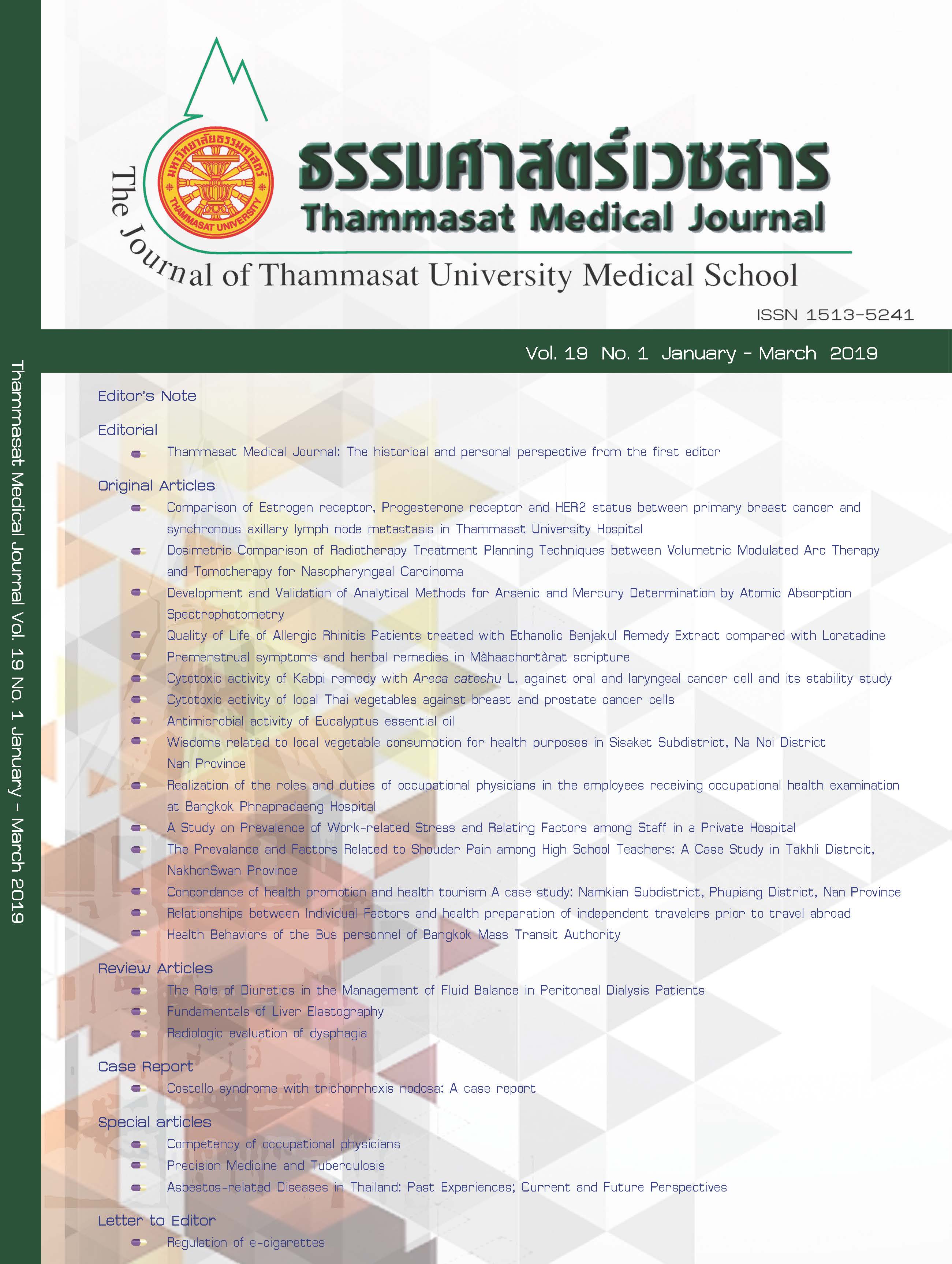ความสอดคล้องของกิจกรรมการสร้างเสริมสุขภาพและการท่องเที่ยวเชิงสุขภาพ กรณีศึกษา ตำบลน้ำเกี๋ยน อำเภอภูเพียง จังหวัดน่าน
คำสำคัญ:
การสร้างเสริมสุขภาพ, การท่องเที่ยวเชิงสุขภาพ, ความสอดคล้องบทคัดย่อ
บทนำ: การศึกษาครั้งนี้เป็นการวิจัยเชิงคุณภาพ เพื่อศึกษาความสอดคล้องของกิจกรรมการสร้างเสริมสุขภาพและการท่องเที่ยวเชิงสุขภาพตำบลน้ำเกี๋ยน อำเภอภูเพียง จังหวัดน่าน
วิธีการศึกษา: ใช้การศึกษาเอกสาร การสัมภาษณ์เชิงลึกและการสังเกตแบบมีส่วนร่วม ใช้วิธีเลือกผู้ให้ข้อมูลแบบเจาะจง โดยผู้ให้ข้อมูลเป็นผู้ที่มีประสบการณ์ และเกี่ยวข้องกับการจัดกิจกรรมการสร้างเสริมสุขภาพ การจัดบริการท่องเที่ยวเชิงสุขภาพและนักท่องเที่ยว รวม 21 คน ระยะเวลาในการศึกษา ตั้งแต่เดือน พฤษภาคม - มิถุนายน พ.ศ. 2561 เครื่องมือในการเก็บข้อมูล ได้แก่ แบบสัมภาษณ์แบบกึ่งโครงสร้าง และแบบสังเกต วิเคราะห์ข้อมูล ด้วยการจัดระเบียบ การแสดงข้อมูล และหาข้อสรุป
ผลการศึกษา: พบว่า กิจกรรมการสร้างเสริมสุขภาพตามแนวทางการสร้างเสริมสุขภาพของกฎบัตรออตตาวา ที่ตำบลน้ำเกี๋ยน มีความสอดคล้องกับการท่องเที่ยวเชิงสุขภาพทั้งโดยตรงและโดยอ้อม ได้แก่ การประกาศนโยบายสาธารณะด้านสุขภาพของตำบลแก่กลุ่มนักท่องเที่ยว การสร้างสิ่งแวดล้อมให้เอื้อต่อการมีสุขภาพดี การบริหารจัดการภายใต้กลุ่มแกนนำชุมชนที่เข้มแข็ง การมีส่วนร่วมของประชาชน การพัฒนาทักษะส่วนบุคคลให้สามารถจัดการ
สุขภาพตนเอง ครอบครัว และใช้ในกิจกรรมการท่องเที่ยว การนำนวัตกรรมสุขภาพระดับท้องถิ่นจากการพัฒนาระบบบริการสุขภาพมาบริการแก่นักท่องเที่ยว
วิจารณ์: กิจกรรมการสร้างเสริมสุขภาพและการท่องเที่ยวเชิงสุขภาพ ตำบลน้ำเกี๋ยน มีความสอดคล้องและก่อให้เกิดผลลัพธ์ทางสุขภาพแก่ประชาชน เนื่องมาจากมีการใช้ทุนทางสังคมมาจัดกิจกรรมสร้างเสริมสุขภาพและการท่องเที่ยว การสร้างความโดดเด่นในบริการการท่องเที่ยวด้วยภูมิปัญญาการแพทย์และสมุนไพรพื้นบ้าน การใช้หลักการตลาดเชิงสังคมในกิจกรรมการท่องเที่ยวซึ่งส่งผลให้กิจกรรมสร้างเสริมสุขภาพ มีความยั่งยืน



